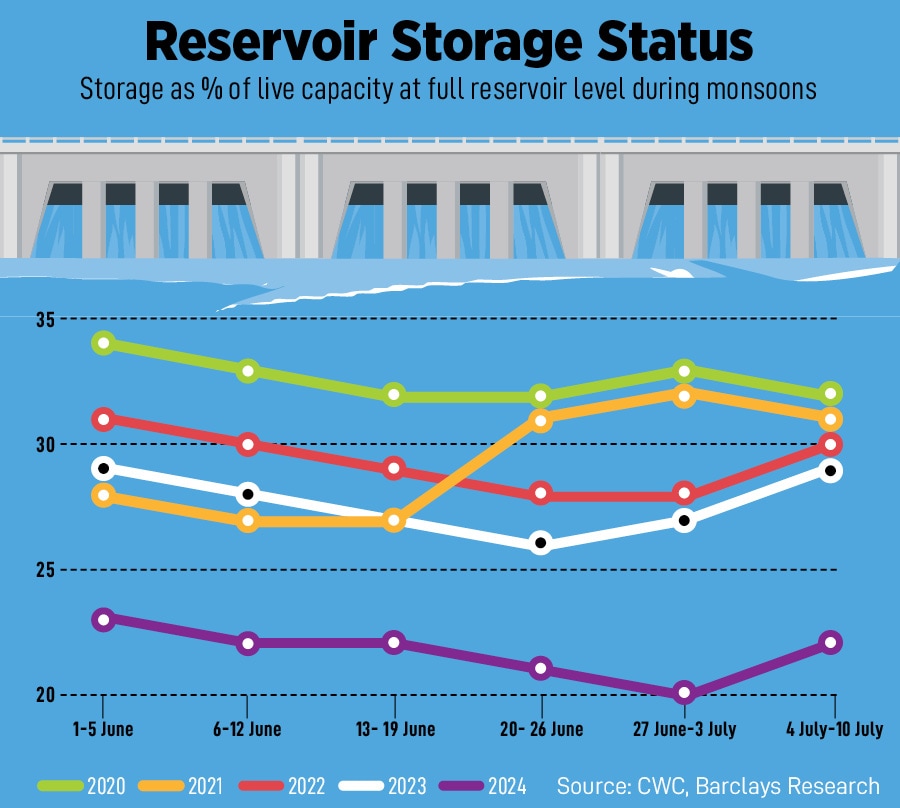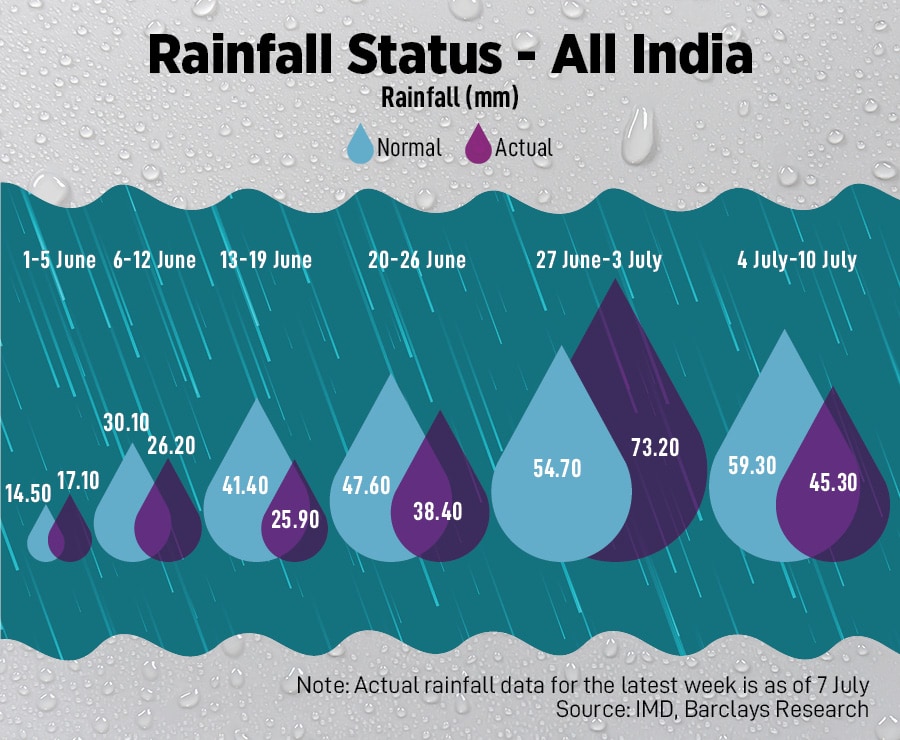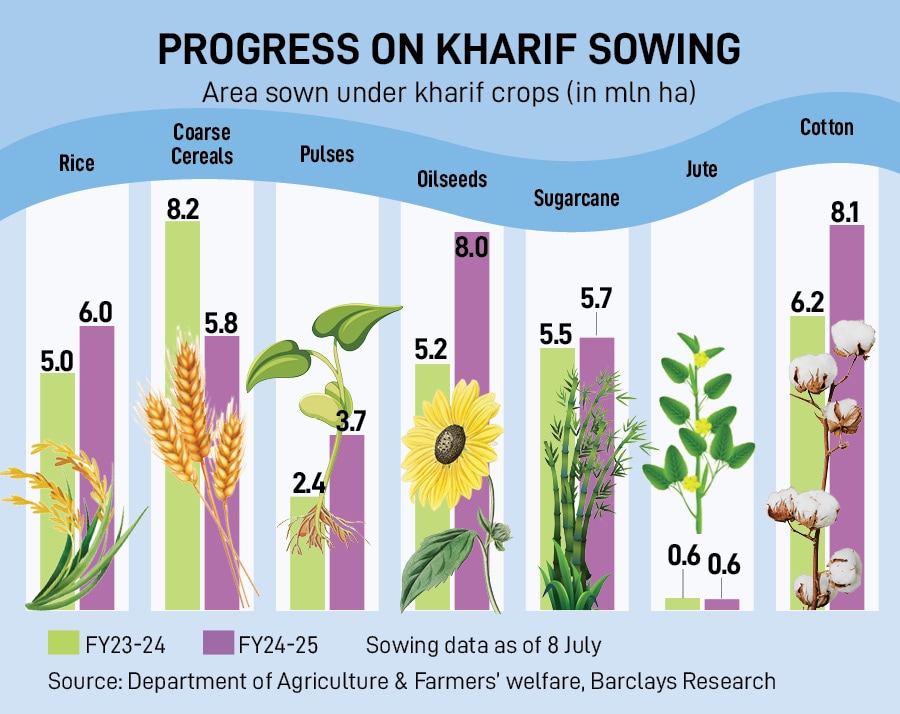
Rain Watch for July 4-10: Monsoon bridges gap, kharif sowing begins
Overall rainfall has improved, turning around to surplus from deficit, while sowing of kharif crops like paddy, cotton, oilseeds and sugarcane show significant jump
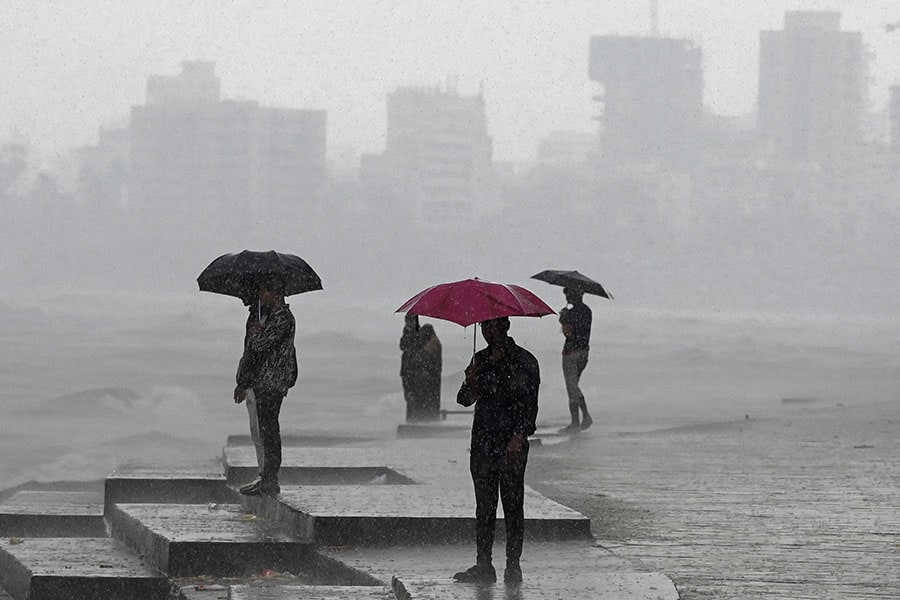 With excess rainfall in almost all the regions over the past week, reservoir levels are likely to improve
Image: Punit Paranjpe / AFP
With excess rainfall in almost all the regions over the past week, reservoir levels are likely to improve
Image: Punit Paranjpe / AFP
Showers in the beginning of July helped bridge the deficit in overall rainfall this monsoon and improved the sowing of essential kharif crops. However, the excess rainfall also resulted in floods in some regions.
From the period June 1 to July 7, rainfall levels are in ‘normal' range on a cumulative basis of 2 percent above the long period average (LPA), as per Barclays analysis of Indian Meteorological Department (IMD) data. This compares to an 11 percent deficit as on June 30. The IMD expects an ‘above normal’ monsoon in July.
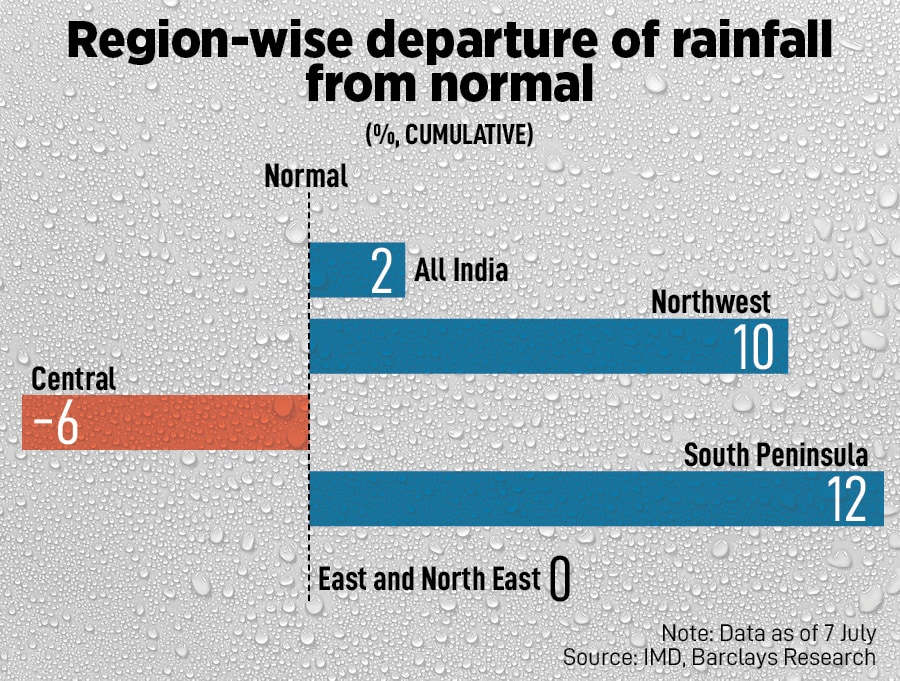
“The monsoon trough is active and near to its normal position in lower tropospheric levels,” IMD says. The forecaster estimates isolated extremely heavy rainfall in a few parts of north-eastern India with localised flooding of roads. Damage to horticulture and standing crops in some areas due to inundation, and riverine flooding in some river catchments are also expected.
Also read: Rain Watch for June 27 to July 3: Monsoon picks pace, low water level risky
